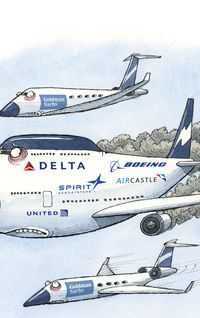No cake walk
Ford Motor’s largest ever bond was brought to market in April as the beleaguered US automaker struggled to cope with the fallout of the coronavirus pandemic and desperately needed to shore up liquidity.
With the company warning of an expected US$2bn loss in the first quarter, and having been reduced to junk status by two ratings agencies, the US$8bn deal showed investors were willing to show faith in companies that were severely impacted by the Covid-19 crisis.
“Until that transaction was complete, people were wondering if Ford had access to the markets at all,” said Logan Nicholson, head of US leveraged finance capital markets at Goldman Sachs, a bookrunner on the deal along with Citigroup, Bank of America, JP Morgan and Morgan Stanley.
“It was a gigantic capital raise in the middle of the crisis that really changed the dynamic of how the market thought about the scale of corporate liquidity raises,” said Nicholson.
As the Covid-19 pandemic rocked the global auto industry, Ford had to draw down on credit lines, suspend its dividend and withdraw its financial guidance. It also suspended production at its US and European factories.
Ratings downgrades in late March meant Ford ignominiously earned its wings as the second-largest fallen angel on record in terms of index notional amount, according to Bank of America.
Ford’s bonds, rated Ba2/BB+/BBB–, shifted out of the IG index and were trading down, some reaching the low 50s.
Yet as daunting as all this was, Ford was able to get to the market, albeit with a little help from high-yield and high-grade desks and the fact the company would be able to benefit, if needed, from the US Federal Reserve’s corporate bond buying facilities that had been announced in late March.
Thus, on April 17, Ford offered a three-part senior unsecured note offering with initial price thoughts in the 9.50% area, 10% area and 11% area.
The deal generated US$41bn of orders, allowing bookrunners to bring pricing much tighter, with Ford selling a US$3.5bn three-year at 8.50%, a US$3.5bn five-year at 9% and a US$1bn 10-year at 9.625%.
“Ford was kind of the same dynamic as other Covid-affected companies, but the difference was they were a fallen angel,” said one senior banker involved in the trade. “That was a dicier execution because we didn’t know how much the market was going to hold and how much of a premium folks would require Ford to pay because it was the first really big transaction done for one of these names.”
To see the digital version of this report, please click here
To purchase printed copies or a PDF of this report, please email gloria.balbastro@lseg.com


